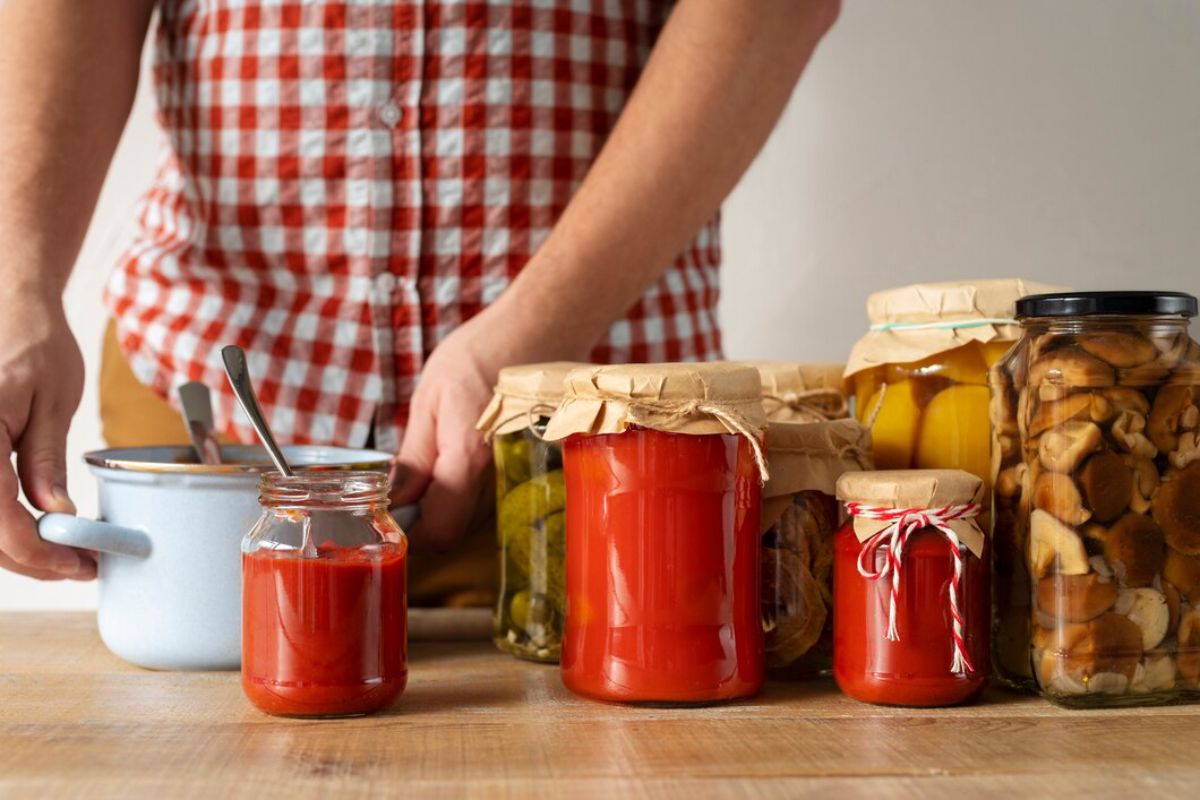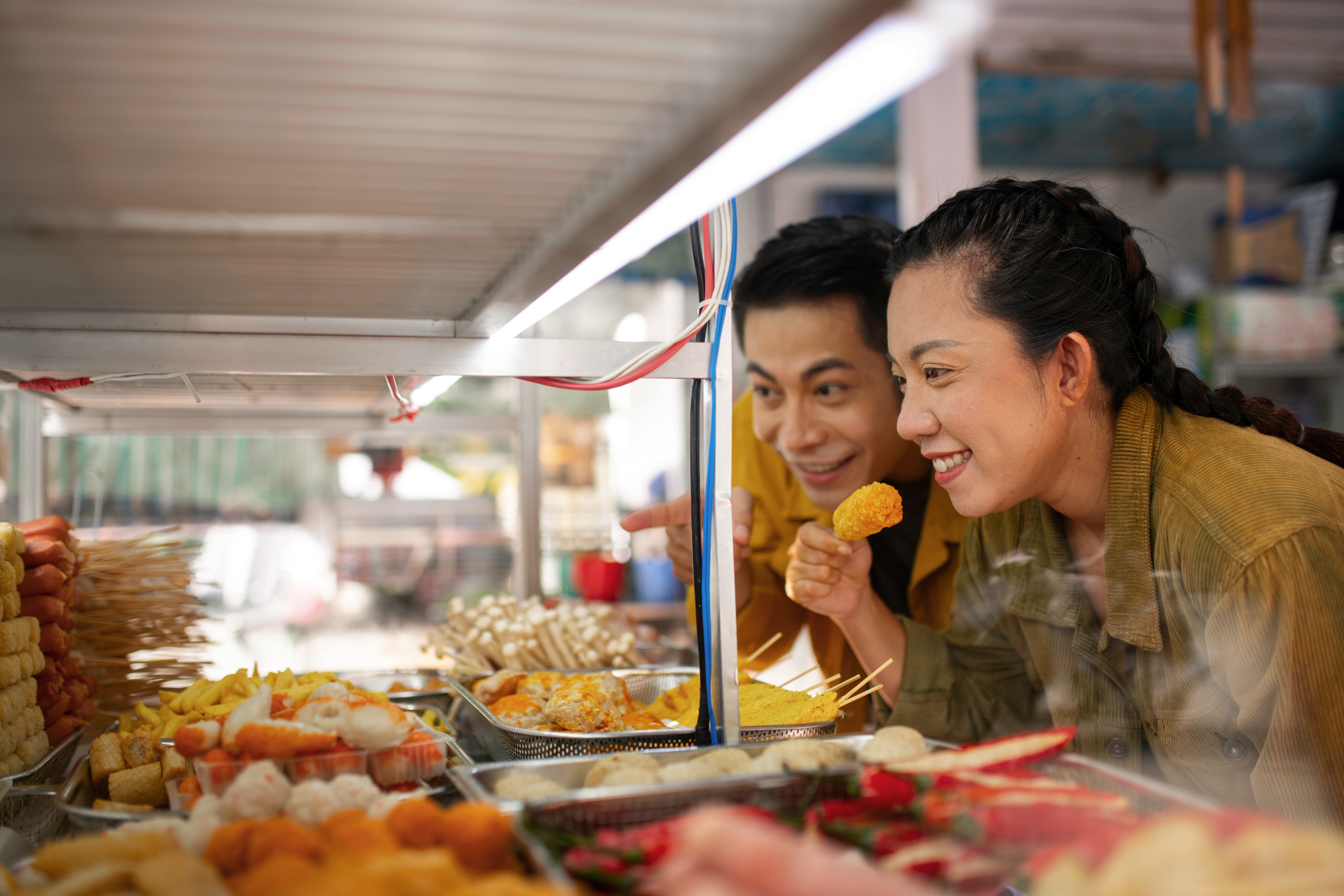
Exploring Local Markets: How to Experience a Destination Through Its Food
One of the best ways to truly understand a destination is through its food. Local markets offer a glimpse into the daily life, traditions, and flavours that define a place. Explore local markets to dive into food culture. Our blog will show you the best food markets worldwide, whether at spice stalls in Morocco or street food in Bangkok.
Why Local Markets Are the Heart of a Destination
Local markets are more than just places to buy food; they are cultural hubs where history, tradition, and community come together. Here’s why visiting a market should be on every traveller’s itinerary:
Authenticity and Tradition
Markets display real, local ingredients and cooking methods, helping us appreciate a country’s food traditions more deeply.
Fresh and Seasonal Produce
Unlike supermarkets, local markets provide fresh, seasonal ingredients, allowing customers to enjoy food at its best flavour.
Interaction with Locals
Engaging with vendors and local shoppers gives insight into daily life, cooking habits, and cultural customs.
Street Food and Unique Flavours
Many top food markets feature stalls with fresh dishes. Visitors can enjoy local delicacies in an authentic setting.
A Feast for the Senses
From freshly baked bread’s aroma to exotic spices’ vibrant colours, markets provide a sensory experience.
How to Explore Food Culture Through Local Markets
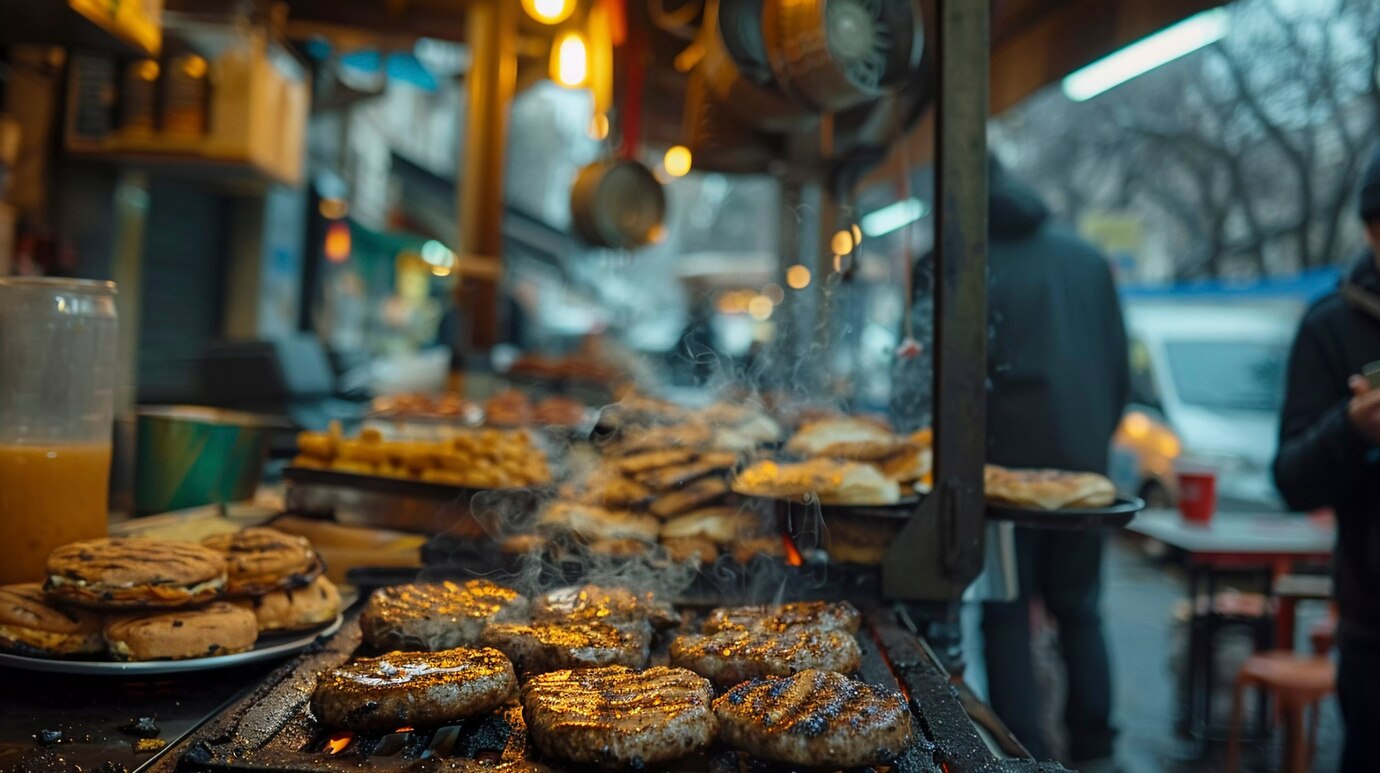
Visiting a local market is more than just a shopping trip—it’s an immersive cultural experience. Here are some tips on how to explore food culture when visiting a market:
Do Your Research Before Visiting
- Find out which markets are the most famous or highly recommended.
- Learn about the local cuisine so you know what to look for.
- Check market hours to ensure you arrive at the best time.
Go Early for the Best Selection
Markets are busiest in the mornings when vendors bring in the freshest produce. Arriving early also allows you to avoid crowds and interact more easily with sellers.
Observe Before You Buy
Walk around before purchasing anything to see what’s available and compare prices. This also helps you understand the local etiquette and how vendors interact with customers.
Try Local Specialities
Each region has its iconic market foods. Don’t be afraid to try something new—ask vendors for recommendations if unsure.
Engage with Vendors
A simple smile and a few basic phrases in the local language can go a long way. Vendors often appreciate when visitors show genuine interest in their products.
Take a Cooking Class After Visiting
Food tours often combine market visits with cooking classes, allowing visitors to turn fresh ingredients into tasty meals.
The Best Food Markets Around the World
Every country has its own unique market culture. Here are some of the best food markets that offer unforgettable culinary experiences:
La Boqueria – Barcelona, Spain
La Boqueria is one of Europe’s most famous markets. It is a feast for the senses. Visitors can sample jamón ibérico, fresh seafood, and exotic fruits while soaking in the lively atmosphere.
Tsukiji Outer Market – Tokyo, Japan
Though the inner wholesale fish market has moved, the Tsukiji Outer Market remains a must-visit for sushi lovers. You’ll find the freshest sashimi, grilled seafood, and authentic Japanese street food here.
Grand Bazaar – Istanbul, Turkey
This historic market is known for its incredible selection of spices, teas, and Turkish delights. Exploring its many alleys is an adventure filled with rich aromas and vibrant colours.
Borough Market – London, UK
London’s oldest market offers artisanal cheeses, gourmet street food, and international delicacies. It’s a great spot to experience the city’s diverse food scene.
Mercado de San Juan – Mexico City, Mexico
A paradise for food lovers, this market is famous for its exotic meats, fresh produce, and traditional Mexican ingredients. Try chapulines (grasshoppers) or sample handmade mole sauce.
Chatuchak Market – Bangkok, Thailand
Chatuchak is one of the biggest markets worldwide. Many food stalls serve Thai favourites, such as mango sticky rice, pad Thai, and coconut ice cream.
Pike Place Market – Seattle, USA
This waterfront market is famous for its fresh seafood, artisan baked goods, and lively fish-throwing vendors—It is a must-visit for anyone exploring the Pacific Northwest’s food scene.
Marché Bastille – Paris, France
At this market, you can experience Paris like a local. It offers fresh baguettes, aged cheeses, and seasonal produce, perfect for a picnic by the Seine.
Kowloon City Wet Market – Hong Kong
Kowloon City Wet Market offers an authentic market experience. There, you can find the freshest seafood, live poultry, and unique vegetables.
Or Tor Kor Market – Bangkok, Thailand
Often ranked as one of the world’s best food markets, Or Tor Kor offers top-quality tropical fruits, fresh seafood, and authentic Thai curry pastes.
Essential Foods to Try at Local Markets
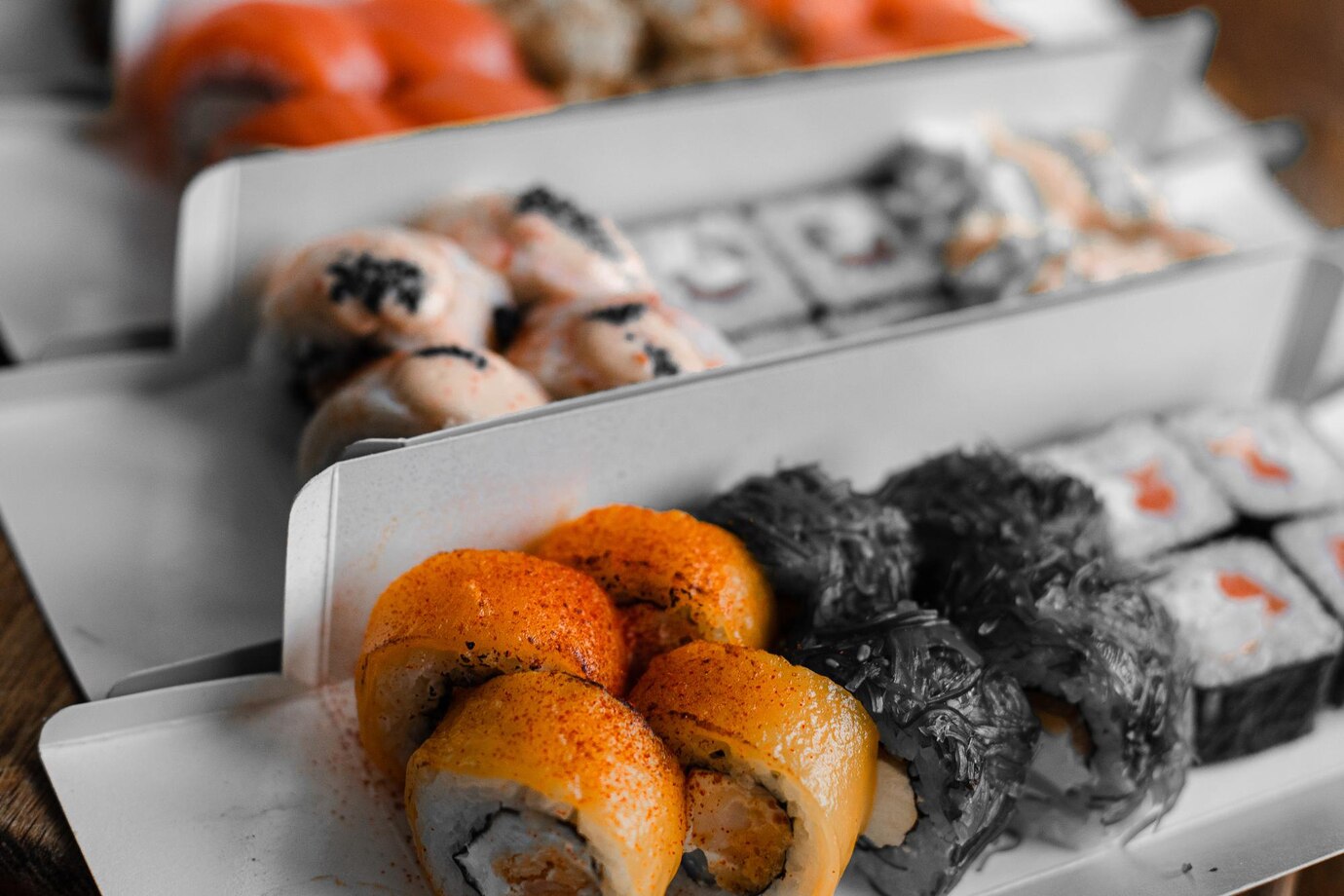
To fully embrace how to explore food culture, be sure to try these iconic market foods:
Asian Markets
- Dim Sum (Hong Kong) – Bite-sized dumplings and buns served in bamboo steamers.
- Banh Mi (Vietnam) – A fusion of French and Vietnamese flavours in a crusty baguette.
- Sushi (Japan) – Fresh, delicate pieces of raw fish served over rice.
European Markets
- Paella (Spain) – A fragrant rice dish with seafood or meat.
- Pirozhki (Russia) – Stuffed pastries filled with meat, potatoes, or cheese.
- Pretzels (Germany) – A salty, doughy snack perfect with beer.
Latin American Markets
- Empanadas (Argentina) – Pastry pockets with meat, cheese, or vegetables.
- Arepas (Colombia & Venezuela) – Cornmeal cakes stuffed with various fillings.
- Tamales (Mexico) – Corn husk-wrapped steamed masa dough with savoury or sweet fillings.
Middle Eastern & African Markets
- Falafel (Middle East) – Deep-fried chickpea balls served on pita bread.
- Shakshuka (North Africa) – Poached eggs in a spiced tomato sauce.
- Bunny Chow (South Africa) – A hollowed-out bread loaf filled with curry.
Final Thoughts: Embracing Local Market Culture
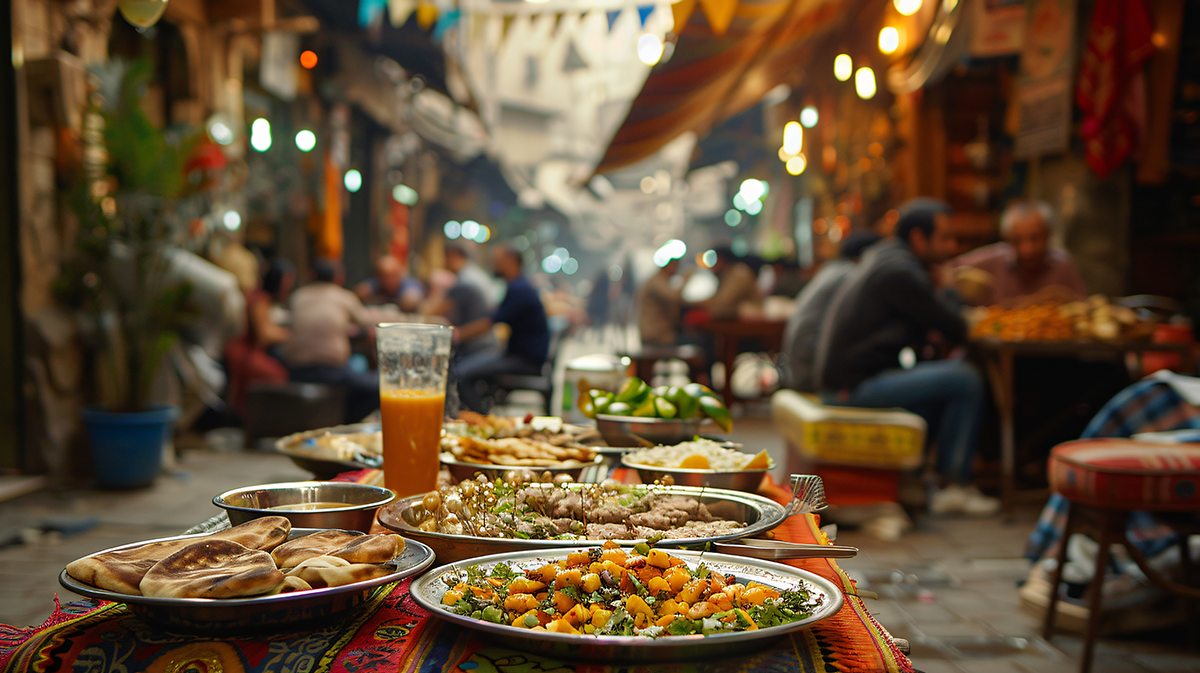
Visiting food markets is an adventure. It’s not just about eating; it’s about experiencing a place’s history, traditions, and lifestyle. By following this local market guide, you can learn how to explore food culture in an immersive and authentic way.
Next time you travel, skip the tourist traps and head to the nearest market. When you explore the top food markets in Europe, Asia, or Latin America, you connect more deeply with the place. You’ll experience its flavours, aromas, and the people who bring them to life. Happy exploring!


